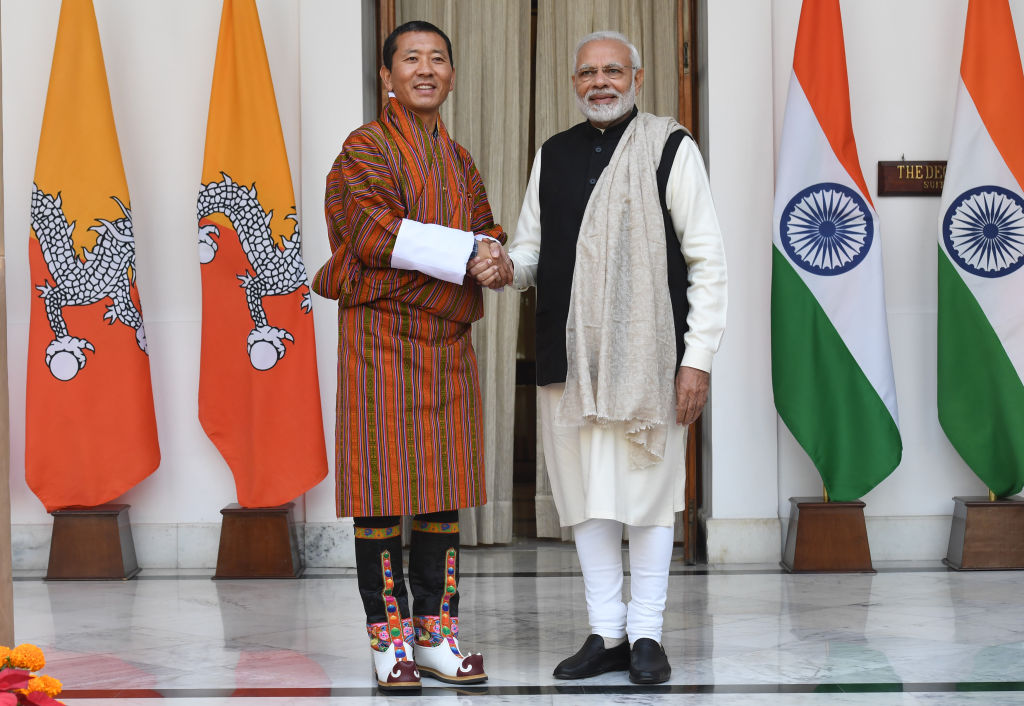- Friday, April 26, 2024

By: Shubham Ghosh
Six years since troops from India and China faced off in Doklam in Bhutan, a small landlocked country sandwiched between the two giants, its prime minister has said that Beijing has an equal say in finding a resolution to the dispute over the high-altitude region which New Delhi believes is illegally occupied by the Chinese.
In an interview with Belgian daily La Libre, prime minister Lotay Tshering said it is not up to Thimpu alone to solve the problem.
“There are three of us. There is no big or small country, there are three equal countries, each counting for a third,” he was quoted as saying.
Bhutan is one of the closest neighbours of India in South Asia but its prime minister’s statement on China having a stake in finding a resolution to the territorial conflict could be problematic for New Delhi as it has been entirely opposed to the idea of China extending its footprint in Doklam since it also lies close to its own sensitive Siliguri corridor, also called ‘Chicken’s Neck’ that separates India’s northeast from the rest of the country.
Tshering said Bhutan is ready for the talks and as soon as its two bigger neighbours are prepared, the matter can be taken up, according to the daily.
According to a report in NDTV, the Bhutanese leader’s latest statement on Doklam contradicts what he had told the Indian daily The Hindu four years ago when he said that “no side” should do anything “unilaterally” near the existing tri-junction point between the two nations.
For a long time, the tri-junction point, as reflected in international maps, lies at a place called Batang La. China’s Chumbi Valley lies to the north of Batang La, Bhutan to the south and east and the Indian state of Sikkim to the west.
Beijing wants the tri-junction to be moved around seven kilometres south of Batang La to a peak named Mount Gipmochi and if that materialises, the entire Doklam plateau would legally become a part of China to India’s discomfort.
In 2017, Indian and Chinese forces were involved in a tense standoff that lasted for nearly two-and-half months when Indian troops entered the Doklam plateau to stop China from extending a road which it was illegally constructing in the direction of Mount Gipmochi and an adjoining hill feature.
Since 2017, when the Chinese decided to back off from the face-off site at Doklam, they carved into Bhutanese territory along the Amo Chu river valley lying adjacent and directly to the east of Doklam. They have set up several villages and a road directly through a territory that has always been Bhutan’s part, as it became evident in official maps of the country, the NDTV report added.
According to the Indian news outlet’s report, PM Tshering’s remark is a likely reflection that Thimpu can’t do much to stop China’s ‘salami-slicing’ of Bhutan’s territory, not just along its western frontiers near Doklam but also to the north of the country in the Jakarlung and Pasamlung valleys.
”The Bhutanese PM’s statement suggests that to save face, Bhutan is claiming that the territories China has stealthily occupied are not Bhutanese areas,” Dr Brahma Chellaney, an Indian strategic affairs expert on China, was quoted as saying by NDTV.
“But this could encourage further Chinese salami slicing of Bhutanese territories,” he added.
![]()